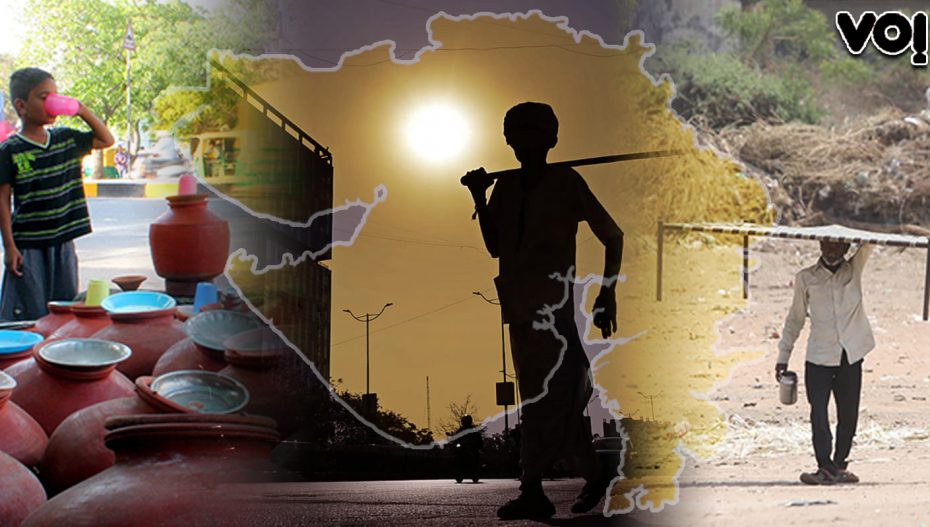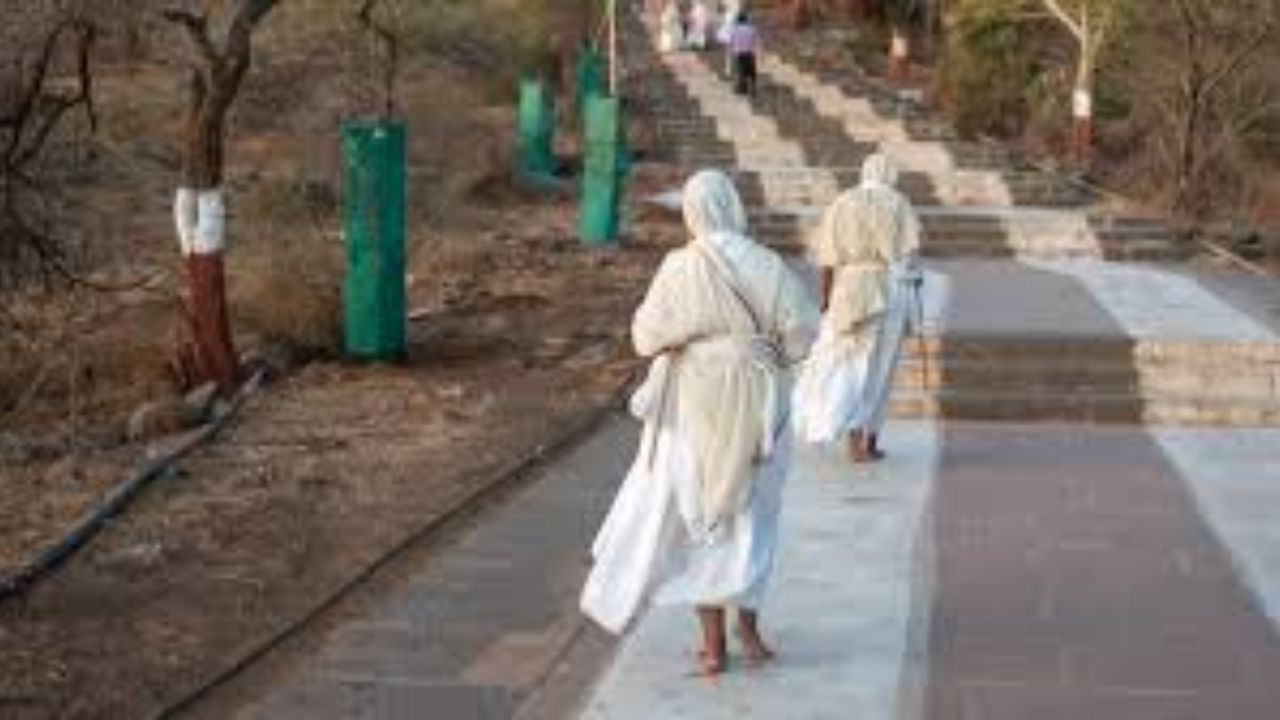Come April and the most common conversation among Gujaratis is the summer heat that gets scorching as the month progresses, the common concern will invariably be “if April is like this, imagine what would happen in May.” The only difference this time is that the concerns had begun right in mid-March when the mercury was already into its early or mid-40 degrees.
This is not as simple as buying better capacity air-conditioners or desert coolers that cool you inside but increase the heat outside. This is climate change knocking at our doorstep, out from your TV sets where world leaders make tall promises of climate control cocooned in some cool country.
Warning bells have already been sounded, probably earlier than expected at all. According to the Sixth Assessment Report cycle of the Intergovernmental Panel on Climate Change, WHEN the United Nations body for assessing the science related to climate change, warns that in Ahmedabad, 11 million people would be at a high risk of living in an urban heat island, with much higher temperatures than in nearby areas.
Then, the Climate Change and Environment Action Plans (CCEAP) for Ahmedabad, published in January 2022 by the Vasudha Foundation in collaboration with the Climate Change Department and Gujarat Ecological Education and Research (GEER) Foundation, run by the Gujarat Forests and Environment Department, has stated that there is a significant trend of increase in the maximum temperatures during summer months in Ahmedabad.
The report states that the mean percentage of warm days has shown an increasing trend of around 8 to 10 per cent as against the days with the minimum temperature showing an opposite trajectory. Cold days have shown a decreasing trend in the recent decade.
Ahmedabad touched 42.6 degrees Celsius, the highest so far this year. “Ahmedabad is experiencing an increase of 1.5 degrees Celsius every year since the 1980s”, Darshini Mahadevia, Ahmedabad based scholar on urban planning told VoI.
There are other reasons why Ahmedabad could vie for being the most avoidable summer capital of India. Ahmedabad district’s 84.04 per cent population resides in urban areas, which is twice the state average according to the 2011 Census.
With a geographical area of 4.13 per cent of Gujarat, the population density of the district (around 890/sq.km) is the second-highest in the state, and thrice the state average. Ahmedabad’s population density is more than twice the national average. This indicates a huge pressure on its resources and infrastructure.
Renowned architect BV Doshi tells VOI during an interview that the increasing heat stress is a reflection of an “urban heat island phenomenon that Ahmedabad is experiencing.”
He points out that climate-adaptive/mitigative urban planning is the key solution to the “microclimate change” the cities like Ahmedabad, Vadodara, Surat and Rajkot are experiencing in Gujarat. Most buildings and houses use construction materials that absorb heat and drive up cooling costs.
A microclimate is defined as any area where the climate differs from the surrounding area. Microclimates occur naturally and can be quite small. They can also be quite large. For instance, a city creates its own climatic patterns, and the larger the urban area, the more significant these will be, Doshi explains.
“Ahmedabad is currently experiencing microclimates like heat islands, it is becoming a large urban microclimate now”, he added.
This microclimatic nature not only affects temperatures, but also rainfall, air pressure, and wind. That means that it can increase the concentration of polluted air, and how long that bad air remains in the city.
Darshini highlighted that low-income urban residents are disproportionately vulnerable to high temperatures. Studies in Ahmedabad show that homes in informal settlements are more likely to have roofs made of uninsulated metal or asbestos sheets, which can aggravate heat impacts. Informal settlements are also likely to have less tree cover or green space that can mitigate extreme heat. People who work outdoors, such as street vendors and construction workers, are also, particularly at risk.
“Most of the houses in the slum are roofed with materials like corrugated tin sheets, cement sheets (Asbestos), plastic, and tarpaulin without sufficient ventilation facilities. The inhabitant dwellings are used as the workplace of gender-inclusive livelihoods where women are involved in home-based works other than merely living”, she added.
Every degree rise above 25°C (77°F) results in a 2% loss in productivity and pushes the poor into the poverty trap by income loss and a rise in expenditure on energy. Reducing the indoor temperature by adopting active cooling systems could work better; however, it costs the resource-deprived communities in terms of increased energy bills, as well as accentuating the climatic change in a larger context. On the other hand, the passive cooling techniques reduce the heat transfer by adding the insulation material on/under the roofs.
“A Heat Action Plan (HAP), the first of its kind coordinated action in South Asia, was developed for Ahmedabad by a coalition of academic, health and environmental groups in 2013. HAP can only initiate an early warning system and inter-agency coordination to alert residents of predicted extreme temperatures. The action plan should be extended beyond it by developing ‘heat shelter homes’ and increasing ‘green spaces’. This is a necessity now”, she added.
Ahmedabad Municipal Corporation (AMC) has created formal communication channels to alert government agencies, health officials and hospitals, emergency responders, local community groups and media outlets of extreme temperatures forecasted by the Indian Meteorological Department’s (IMD) Meteorological Centre located in Ahmedabad.
Environmentalist Rohit Prajapati told VoI that the increasing private urban transport and slow-moving of vehicles due to heavy traffic is one of the fastest-growing sources of Green House Gas (GHG) emissions in cities like Ahmedabad.
“Days were getting hotter in Ahmedabad. In May 2016, the temperature touched 50º C. The previous high had been 47.8º C in 1916. This year it had touched 42º C constantly for days. The difference between day and night-time temperatures is falling as well. Ahmedabad’s typically sandy loam soil quickly heats up during peak hours of the day and cools down rapidly towards the evening, he says.
The weak urban heat island pattern may also be because of the Sabarmati river flowing through the city centre. The water acts as a heat moderator because of the high latent heat of vaporisation and heat storage capacity as compared to land parts. The actual reason behind such behaviour is not clear yet, as it is influenced by a variety of factors,” he added.
The effects of heat stress have severe health impacts including dehydration, heat exhaustion and stroke, and exacerbations of chronic cardiovascular and respiratory diseases now. There is no proper documentation of how heat stress is affecting people, especially the economically vulnerable population.
Ahmedabad district has 12 main industrial estates, 12 special economic zones and 10 industrial parks. The industrial zones are restricted to the surrounding areas of the Ahmedabad metropolis and some industrial towns of the district.
“Between 2005 and 2019, the total emissions of Ahmedabad district increased by 78 per cent, which is from 5.16 million tonnes CO2 in 2005 to 9.18 million tonnes CO2 in 2019. This is one of the major factors my the city is experiencing heat stress”, he added.
M. Rajshekhar an Indian journalist with primary interests in energy, environment and climate in his book, Despite The State: Why India Lets Its People Down And How They Cope, mentions that even though Ahmedabad created a Heat Action Plan but continued to chop trees.
“By 2030, vegetation would cover just 3 per cent of the city’s area. Surat created plans on how to mitigate floods but stayed silent when the Essar Group built an embankment that cut the delta of the Tapi, which flowed through Surat, by half, Or take Gujarat itself. It pushed projects like the Sardar Sarovar Dam, claiming water needs, but did nothing to curb water pollution in the state,” Rajshekhar says.
Photo Credits: Hanif Sindhi













